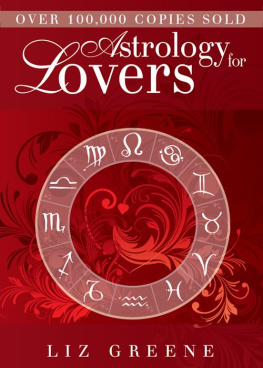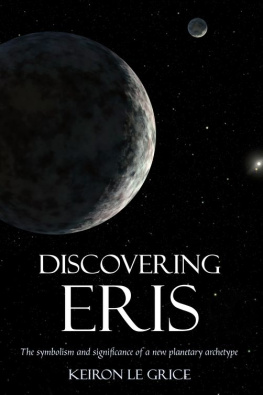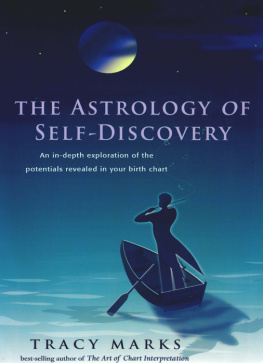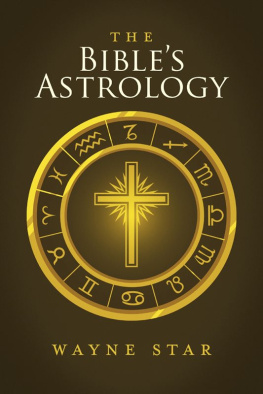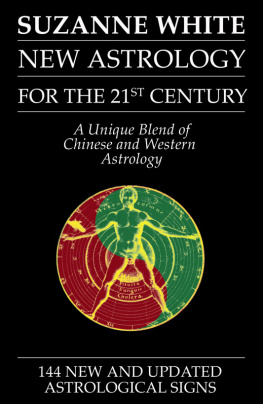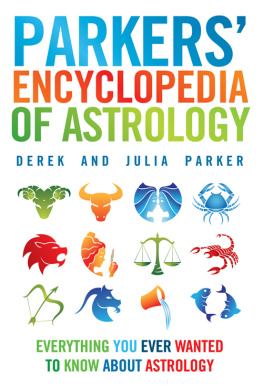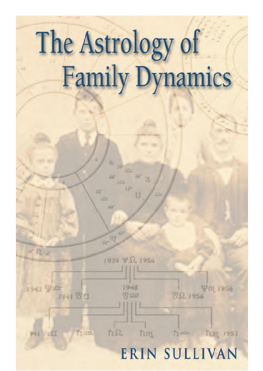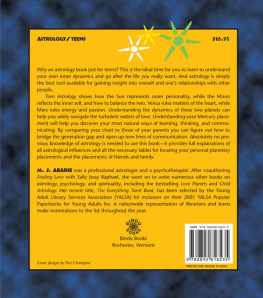Liz Greene - Dynamics of the Unconscious
Here you can read online Liz Greene - Dynamics of the Unconscious full text of the book (entire story) in english for free. Download pdf and epub, get meaning, cover and reviews about this ebook. year: 1988, publisher: Weiser Books, genre: Science. Description of the work, (preface) as well as reviews are available. Best literature library LitArk.com created for fans of good reading and offers a wide selection of genres:
Romance novel
Science fiction
Adventure
Detective
Science
History
Home and family
Prose
Art
Politics
Computer
Non-fiction
Religion
Business
Children
Humor
Choose a favorite category and find really read worthwhile books. Enjoy immersion in the world of imagination, feel the emotions of the characters or learn something new for yourself, make an fascinating discovery.

- Book:Dynamics of the Unconscious
- Author:
- Publisher:Weiser Books
- Genre:
- Year:1988
- Rating:5 / 5
- Favourites:Add to favourites
- Your mark:
- 100
- 1
- 2
- 3
- 4
- 5
Dynamics of the Unconscious: summary, description and annotation
We offer to read an annotation, description, summary or preface (depends on what the author of the book "Dynamics of the Unconscious" wrote himself). If you haven't found the necessary information about the book — write in the comments, we will try to find it.
Dynamics of the Unconscious — read online for free the complete book (whole text) full work
Below is the text of the book, divided by pages. System saving the place of the last page read, allows you to conveniently read the book "Dynamics of the Unconscious" online for free, without having to search again every time where you left off. Put a bookmark, and you can go to the page where you finished reading at any time.
Font size:
Interval:
Bookmark:

First published in 1988 by
Samuel Weiser, Inc.
P.0. Box 612
York Beach, Maine 03910-0612
www.weiserbooks.com
08 07 06 05 04 03 02 01 00
13 12 11 10 9 8 7 6 5
Copyright 1988 Liz Greene and Howard Sasportas
All rights reserved. No part of this publication may be reproduced or transmitted in any form or by my means. electronic or mechanical, including photocopying, recording. or by any information storage and retrieval system, without permission in writing from Samuel Weiser, Inc. Reviewers may quote brief passages.
Library of Congress Cataloging-in-Publiation Data:
Greene, Liz
Dynamics of the unconscious.
(Seminars in psychological astrology; v.2)
Bibliography: p.
1. Astrology and psychology. 2. Subconsciousness-Miscellanea. I. Sasportas. Howard. II. Title. III. Series: Greene, Liz, Seminars in psychological astrology; v. 2.
BF1729.P8G7 1988
133.5'81542
88-5612
ISBN 0-87728-674-4
BJ
Cover illustration by Liz Greene
Typeset in 10 point Palatino
Printed in the United States of America
The paper used in this publication meets the minimum requirements of the American National Standard for Information SciencesPermanence of Paper for Printed Library Materials Z39.48.
www.redwheelweiser.com
www.redwheelweiser.com/newsletter
The Astrology and Psychology of Aggression
by Howard Sasportas
Depression
by Liz Greene
The Quest for the Sublime
by Howard Sasportas
Alchemical Symbolism in the Horoscope
by Liz Greene
Among all the proliferating maps and models of the human psyche which are now available to us, there is one which dominates the rest in depth, subtlety and importance: the duality of conscious and unconscious. This view of the psyche is called dynamic because of the tension, movement and exchange implicit in such a duality; and its official history begins in 1775 with the Viennese physician Franz Anton Mesmer's discovery of what he called the universal fluid. Of course human duality is a much older concept than Mesmer's, although known in antiquity under other, more mythic names. But in the two centuries following Mesmer have come the giants of modern depth psychologyCharcot, Janet, Freud, Klein, Adler, Jungand a growing body of knowledge and skill has become available to those who wish to, or must, traverse the strange byways of the unconscious.
Viewed through the flattening lens of behavioural observation, the astrological chart is static: no more than a listing of fixedcharacter traits, or a map of potentials many of which, for inexplicable reasons, the individual cannot seem to fulfil. But viewed through the three-dimensional lens of a consciousunconscious duality, an entire play emergesfull of the twists and turns of a surprising plot, teeming with tragic and comic Shakespearean characters, ornamented with ingeniously changing stage sets and costumes, punctuated by perfectly timed cues, the opening and closing of the curtain, and intervals where everyone goes out for a cup of tea. The astrological chart is indeed a map of potentials and character traits, and reveals a rich portrait of a complete individual personality. But, like the characters in a play, the planets do not all come out at once; the parts may be played differently according to interpretation and the skill of the actors; the timing may be mucked up by a stage manager too preoccupied with what the audience will think. And some characters are unable to come out at all, locked back stage by the imperious will of the ego or the dictates of parental voices, numbed or bound, unable to speak save through moods, dreams, illnesses, and compulsions, and capable only of covert sabotage to communicate the fact that they are still, despite one's best efforts at becoming what one is not, alive and waiting to be heard. There are dimensions of every horoscope which are consciousqualities and values with which the person identifies and dimensions which are unconscious, partly through childhood repression, partly through social expectations and pressures, partly through sometimes misguided moral conviction, and partly through sheer ignorance of just who these characters really are.
It would seem that the unconscious, whatever it is, possesses its own wisdom and intentions, and its own plan for the proper direction of the play; and this hidden intelligence may or may not coincide with what we believe we are and what we think we want from life. It also seems to possess a drive toward completeness that is, all the characters seem to want to have their time onstage and their appropriate interaction, so that the innate integrity of the play can be achieved. An unconscious drive or compulsion, be it interpreted as creative or destructive by the ego, is capable of thwarting the achievement of our conscious aims, often creating the feeling that something is working against us. For example, a man born with Moon conjunct Venus in Cancer in the 1st house might be acutely aware of his need to be involved with another person in an intimate and enduring relationship. He may see him self as a warm, loving person, eager to accommodate the needs of others and frightened of loneliness and solitude. But if this man also has Uranus in Gemini in the 12th house, he will also possess a powerful unconscious drive toward independence and absolute autonomya part of him, a character in his play, who furiously resists commitment because it means losing both space and alternatives. The more the man identifies with his Moon-Venus conjunction, and the more he attempts to repress the Uranian voice, the more he guarantees that Uranus will defeat him; for in any contest between conscious and unconscious, it is the unconscious which wins-not because it is inimical, but because it is wiser. The man may be habitually attracted to those partners who are not free to be with him, or who, for whatever reason, cannot reciprocate his advances. Or he may offer love generously with the right hand and unconsciously sabotage it with the left, gradually driving a partner into that separation which he himself covertly desires, although he seems to be a blameless victim of someone else's coldness. And he may, sooner or later, turn up on the astrologer's doorstep asking why, despite his longing for closeness and commitment, fate seems to keep dealing him the wrong cards.
We can, to some degree, educate and manage, or at thevery least, provide constructive outlets for, what we are conscious of in ourselves. But if we are unconscious of something, it will sooner or later find a way to dominate and control us. Those characters whom we believe have been removed from the cast list have a way of bursting onstage and disrupting our lives at the worst possible moments. Even more mysterious, what we are unconscious of has a way of not only of erupting from within, but of materialising from withoutso we cyclically and inevitably meet those circumstances and people in life who are, in a strange and inexplicable way, distillations of our own unknown selves. Ian Fleming once wrote that once is chance, twice is coincidence, and three times is enemy action. If an individual has a repeating pattern of conscious goals which are blocked or frustrated, then it is wise to look to the unconscious for the reason why.
The astrological chart is a superb map for navigatingthis mysterious terrain, for it is not only a portrait of those parts of us which we are willing to acknowledge or are happy for the world to see. It tells the whole story, revealing all the characters, and exposing aspects of our natures we may try to conceal not only from others, but from ourselves as well. People, without meaning to, lie; but the birth chart does not. Nor do astrological symbols moralise as we are wont to do, by pronouncing judgement on what is higher or lower, good or bad within us. Every astrological symbol contains a spectrum of positive and negative qualities, and a teleology or inherent meaning. Like a prism, the view depends upon where the source of light is located. Interpreted and understood with some insight into the complex workings of the unconscious, the chart can help put us in touch with all the characters, and offer a possi bility of developing a different and more compassionate attitude toward those aspects of ourselves which we may have misinter preted, feared, or simply never met.
Next pageFont size:
Interval:
Bookmark:
Similar books «Dynamics of the Unconscious»
Look at similar books to Dynamics of the Unconscious. We have selected literature similar in name and meaning in the hope of providing readers with more options to find new, interesting, not yet read works.
Discussion, reviews of the book Dynamics of the Unconscious and just readers' own opinions. Leave your comments, write what you think about the work, its meaning or the main characters. Specify what exactly you liked and what you didn't like, and why you think so.


